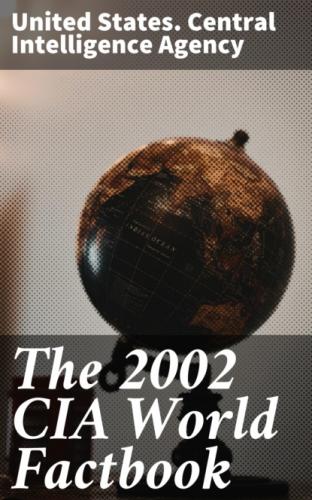Industries: agricultural processing; knit and woven apparel; wood and wood products; copper, tin, tungsten, iron; construction materials; pharmaceuticals; fertilizer
Industrial production growth rate: NA%
Electricity - production: 4.766 billion kWh (2000)
Electricity - production by source: fossil fuel: 83.3% hydro: 16.7% other: 0% (2000) nuclear: 0%
Electricity - consumption: 4.432 billion kWh (2000)
Electricity - exports: 0 kWh (2000)
Electricity - imports: 0 kWh (2000)
Agriculture - products: rice, pulses, beans, sesame, groundnuts, sugarcane; hardwood; fish and fish products
Exports: $1.8 billion (f.o.b., 2001)
Exports - commodities: apparel 55%, foodstuffs 18%, wood products 13%, precious stones 2% (2000)
Exports - partners: US 27%, India 16%, China 7%, Japan 6%, Singapore 6% (2000 est.) note: as narcotics, teak, and gems - or the largely unrecorded border trade with China and Thailand
Imports: $2.2 billion (f.o.b., 2001)
Imports - commodities: machinery, transport equipment, construction materials, food products, textile fabrics, petroleum products
Imports - partners: China 26%, Singapore 23%, South Korea 15%, Japan 10%,
Taiwan 10% (2000 est.)
Debt - external: $6 billion (FY99/00 est.)
Economic aid - recipient: $99 million (FY98/99)
Currency: kyat (MMK)
Currency code: MMK
Exchange rates: kyats per US dollar - official rate - 6.8581 (January 2002), 6.7489 (2001), 6.5167 (2000), 6.2858 (1999), 6.3432 (1998), 6.2418 (1997); kyats per US dollar - black market exchange rate - 435 (yearend 2000)
Fiscal year: 1 April - 31 March
Communications Burma
Telephones - main lines in use: 250,000 (2000)
Telephones - mobile cellular: 8,492 (1997)
Telephone system: general assessment: meets minimum requirements for local and intercity service for business and government; international service is good domestic: NA international: satellite earth station - 1 Intelsat (Indian Ocean)
Radio broadcast stations: AM 2, FM 3, shortwave 3 (1998)
Radios: 4.2 million (1997)
Television broadcast stations: 2 (1998)
Televisions: 320,000 (2000)
Internet country code: .mm
Internet Service Providers (ISPs): 1 note: as of September 2000, Internet connections were legal only for the government, tourist offices, and a few large businesses (2000)
Internet users: 500 (2000)
Transportation Burma
Railways: total: 3,991 km narrow gauge: 3,991 km 1.000-m gauge (2000 est.)
Highways: total: 28,200 km paved: 3,440 km unpaved: 24,760 km (1996)
Waterways: 12,800 km note: 3,200 km navigable by large commercial vessels
Pipelines: crude oil 1,343 km; natural gas 330 km
Ports and harbors: Bassein, Bhamo, Chauk, Mandalay, Moulmein, Myitkyina,
Rangoon, Akyab (Sittwe), Tavoy
Merchant marine: total: 35 ships (1,000 GRT or over) totaling 382,386 GRT/582,084 DWT note: includes some foreign-owned ships registered here as a flag of convenience: Germany 5, Japan 4 (2002 est.) ships by type: bulk 9, cargo 21, container 1, passenger/cargo 3, petroleum tanker 1
Airports: 80 (2001)
Airports - with paved runways: total: 8 over 3,047 m: 2 2,438 to 3,047 m: 2 914 to 1,523 m: 1 (2001) 1,524 to 2,437 m: 4
Airports - with unpaved runways: 2 1,524 to 2,437 m: Heliports: 2 (2001)
Military Burma
Military branches: Army, Navy, Air Force
Military manpower - military age: 18 years of age (2002 est.)
Military manpower - availability: males age 15-49: 12,211,144 note: both sexes liable for military service (2002 est.) females age 15-49: 12,223,069
Military manpower - fit for military service: males age 15-49: 6,502,013 females age 15-49: 6,491,732 (2002 est.)
Military manpower - reaching military age annually: males: 486,432 females: 470,667 (2002 est.)
Military expenditures - dollar figure: $39 million (FY97/98)
Military expenditures - percent of GDP: 2.1% (FY97/98)
Transnational Issues Burma
Disputes - international: despite renewed border committee talks, significant differences remain with Thailand over boundary alignment and the handling of ethnic guerrilla rebels, refugees, smuggling, and drug trafficking in cross-border region; Burmese attempts to construct a dam on border stream with Bangladesh in 2001 prompted an armed response halting construction; Burmese Muslim migration into Bangladesh strains Bangladesh's meager resources
Illicit drugs: world's largest producer of illicit opium, surpassing Afghanistan (potential production in 2001 - 865 metric tons, down 21% due to drought, and to a lesser extent, eradication; cultivation in 2002 - 105,000 hectares, a 3% decline from 2000); surrender of drug warlord KHUN SA's Mong Tai Army in January 1996 was hailed by Rangoon as a major counternarcotics success, but lack of government will and ability to take on major narcotrafficking groups and lack of serious commitment against money laundering continues to hinder the overall antidrug effort; major source of methamphetamine and heroin for regional consumption
This page was last updated on 1 January 2002
========================================================================
Benin
Introduction
Benin
Background: Dahomey gained its independence from France in 1960; the name was changed to Benin in 1975. From 1974 to 1989 the country was a socialist state; free elections were reestablished in 1991.
Geography Benin
Location: Western Africa, bordering the North Atlantic Ocean, between
Nigeria and Togo
Geographic coordinates: 9 30 N, 2 15 E
Map references: Africa
Area: total: 112,620 sq km water: 2,000 sq km land: 110,620 sq km
Area - comparative: slightly smaller than Pennsylvania
Land boundaries: total: 1,989 km border countries: Burkina Faso 306 km,
Niger 266 km, Nigeria 773 km, Togo 644 km
Coastline: 121 km
Maritime claims: territorial sea: 200 NM
Climate: tropical; hot, humid in south; semiarid in north
Terrain: mostly flat to undulating plain; some hills and low mountains
Elevation extremes: lowest point: Atlantic Ocean 0 m highest point:
Mont Sokbaro 658 m
Natural resources: small offshore oil deposits, limestone, marble, timber
Land use: arable land: 15% permanent crops: 1% other: 84% (1998 est.)
Irrigated land: 120 sq km (1998 est.)
Natural hazards: hot, dry, dusty harmattan wind may affect north from
December to March
Environment - current issues: inadequate
